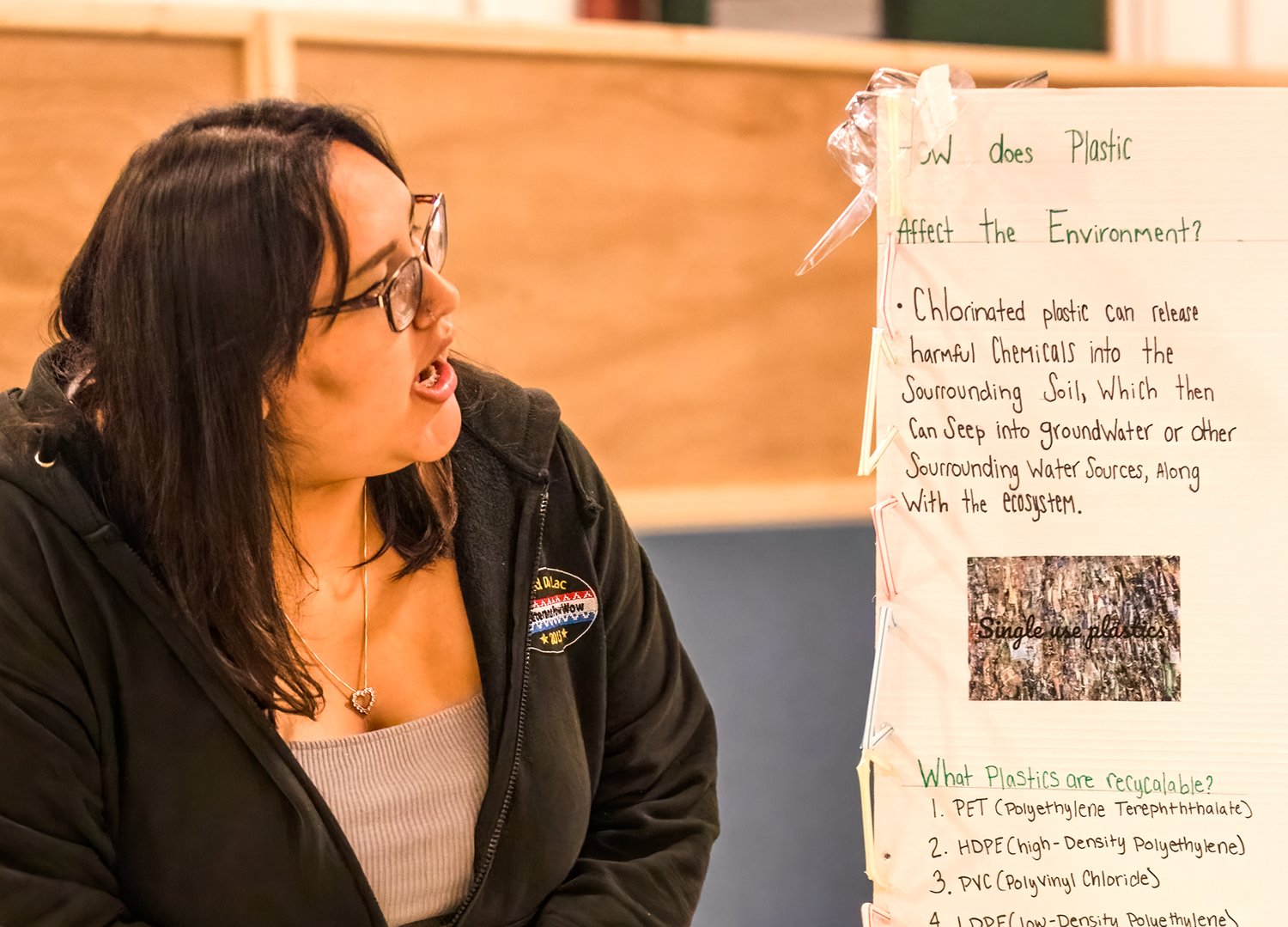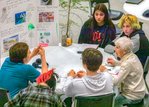Support the Timberjay by making a donation.
Expo gives VCS students a chance to shine
Students seek solutions to pollution from plastics
TOWER- As students from Vermilion Country School enjoy the summer, they’ll do so with a mindful eye toward the environment, being watchful for evidence of something they once might have taken …
This item is available in full to subscribers.
Attention subscribers
To continue reading, you will need to either log in to your subscriber account, or purchase a new subscription.
If you are a current print subscriber, you can set up a free website account and connect your subscription to it by clicking here.
If you are a digital subscriber with an active, online-only subscription then you already have an account here. Just reset your password if you've not yet logged in to your account on this new site.
Otherwise, click here to view your options for subscribing.
Please log in to continue |
Expo gives VCS students a chance to shine
Students seek solutions to pollution from plastics
TOWER- As students from Vermilion Country School enjoy the summer, they’ll do so with a mindful eye toward the environment, being watchful for evidence of something they once might have taken for granted – plastics.
As the school year was winding down, activity was ratcheting up at the Tower charter school as six groups of students, seventh through twelfth grades, made final preparations for their Spring Expo, the culmination of a learning project that this year was inspired by a community member.
“The reason we came up with plastics is because on Earth Day, we had Pat Helmberger come in with plastic bags and do a presentation for us, and the kids were just really interested in it,” said learning advisor Karin Schmidt. “We decided to really focus on that, and we kept it open ended so they could choose what they like to do.”
This was the second Expo project students did this year, both designed for them to investigate and learn about specific areas of environmental education. The first centered on their greenhouse activities, learning about where food comes from.
“Then they had to do a presentation on a particular type of food and what the environmental concerns are with it,” Schmidt said. “They did individual projects the first time, and this time we’re doing group projects.
Each group did online research to hone in on the waste and hazards created by single-use plastics, ones that are not readily recyclable. They had to describe the scope of the problem and propose possible alternative uses for them, then illustrate those by creating display boards with the information, pictures, and graphics. They also created physical samples of alternative uses, such as cutting bottles down into planters and making rope by weaving together plastic bags, and more.
June 2 was Expo Day. Schmidt and learning advisors Paula Herbranson and Allan White were joined by other staff and local community members to put the students to the test.
“We’re assessing what they know and how they learned it through an interview process,” Schmidt explained. “It’s very different from a traditional assessment process.”
Working individually and in pairs, the adults spread out through the room, spending 10-15 minutes with each group listening to their presentations and asking questions. Some questions were straightforward, while others forced students to take what they had learned and go a step further by hypothesizing possible actions or outcomes, including how to advocate for change.
“That’s the highest one, to actually make a change and do something for your community,” Schmidt said. “When we ask kids those questions, they’re having to think outside the box rather than just what they can do but how they can stretch it out to the community.”
While their research was thematically similar and their displays had common elements, each display and presentation featured something unique. One group created a tropical island with sand, a creative palm tree crafted from plastic, and its shores overwhelmed by plastic scraps. Another made extensive use of plastic bags as a foundation for the display and had a plastic jump rope at the ready for demonstrations. Illustrations varied from basic pictures of single-use plastics like water bottles to thought-provoking photos of adverse environmental impacts on nature.
One evaluator who was particularly impressed with the students’ work was Helmberger.
“I was just totally amazed at the work thkids have done. Some of those kids are really innovative with their ideas,” she said. “I shouldn’t have been surprised but I kind of was because they were so enthusiastic about their projects. There are some real creative ideas here.”
Helmberger was also encouraged by the prevailing attitude she discovered as she circulated throughout the room.
“I saw a positivity in these kids that really surprised me,” she said. “One kid told me, ‘Since you were here last, I have noticed more and more of the plastic that’s in the community, and it does make me want to do more.’”
The group-based project also drew on community service experiences and integrated other academic learning students had throughout the year, Schmidt said.
“So, this is the culmination of everything,” she said. “I think it was a good, successful Expo.”









